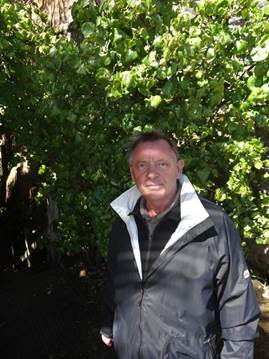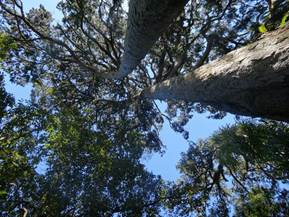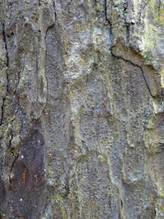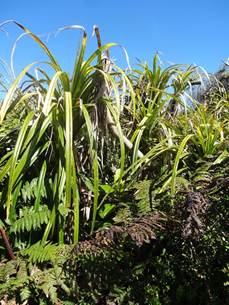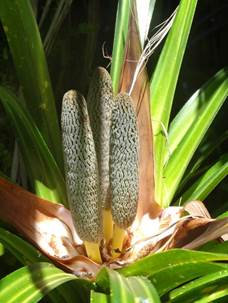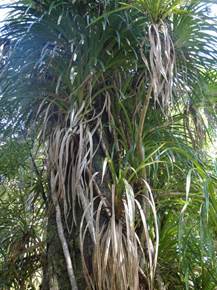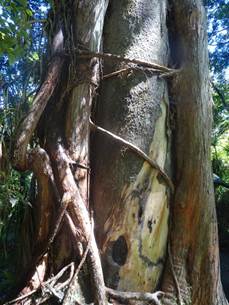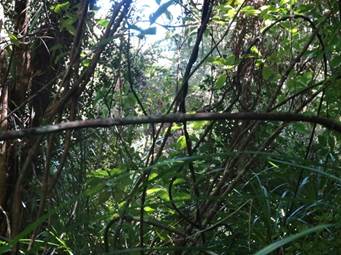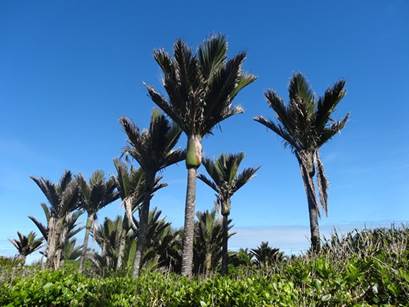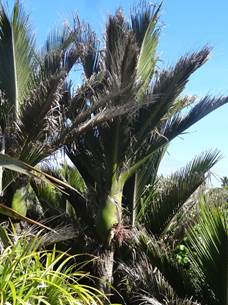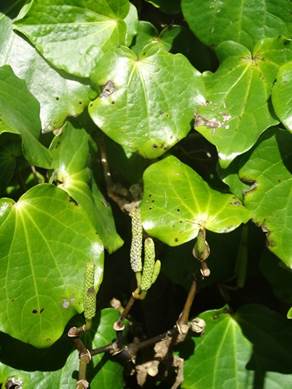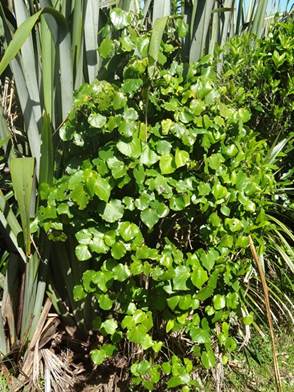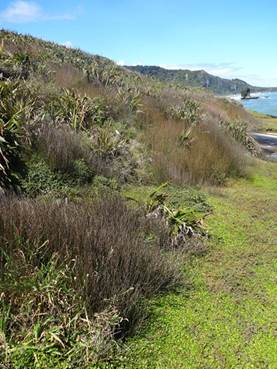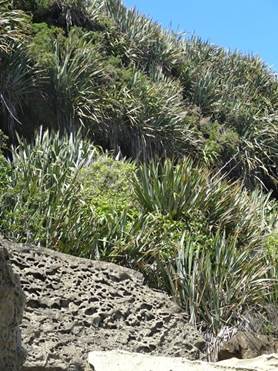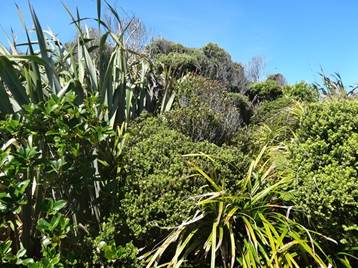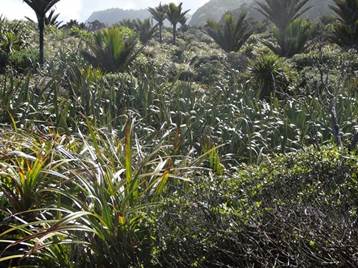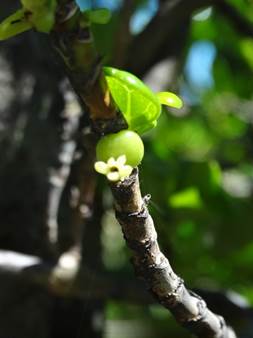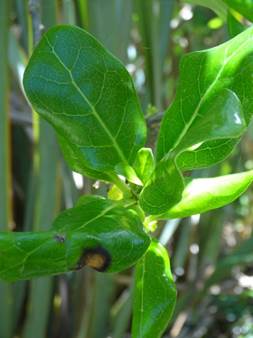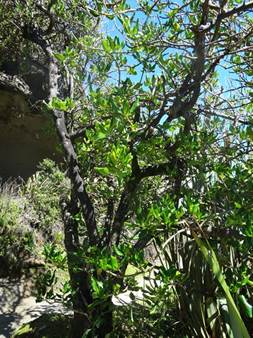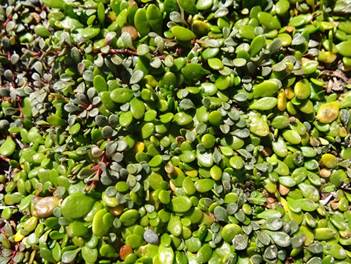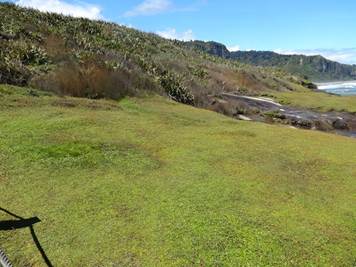Punakaiki to Westport - Truman track 1

After the pancake rocks did a short walk down the Truman Track. Through woodland to a sandstone bay. Paul at the start.
Coastal strip in this area are zoned. The plants and animals that live here have to be able to tolerate salty-storm winds, pounding waves and grinding sands. The shrubs tend to have waxy, stubby leaves. Basically you get three zone: forest, flax and turf. Furthest away from the winds and salt spray you get forest of typically dominated by trees called northern rata and rimu (these guys are so tall and their leaves right at the top that difficult to get a picture of, there must be seedlings but no idea what they look like). I digress, within the forest you get the tree ferns, nikau palms, broadleaf, supplejack and kiekie vines. The whole lot is a mosaic of different coloured greens, doesn’t really show up in the photos we have taken so far. This is rimu (red pine) (Darcrydium cupressinum) can grow 20 – 60m tall. You see this throughout NZ up to about 600m. It belongs to the family Podocarpacea, hence these forests are referred to as podocarps. Difficult to photograph!
This is kiekie (Freycineria banksii) a climbing shrub. These look a bit like some of the pot plants you get at home. One in flower.
They can grow really tall winding themselves around trees.
This is the northern rata (Metrosideros robusta). It begins life as an epiphyte on a host tree and sends down areal roots which turn woody and trunk like and encase the host tree with numerous coils. Once rooted in the ground it kills the host tree. Browsing by possums is a real problem, they can kill a mature tree in three years.
You see lots of vines in these lowland forests. This is supplejack (Ripogonum scandens). The stems hang in flexible loops between the trees. Can you imagine how difficult it was to get through this stuff. The vines were used for lashing and thatching.
These are the nikau palms (Rhopalostylis sapida), common in lowland forests. They grow up to 10m tall. It has a single stout trunk and the leaves are produced from a large solitary bud at the top of the trunk. It’s the most southerly growing palm in the world. Pigeons love eating the fruit of these.
This is the pepper tree (Macropiper excelsum). It grows up to about 6 m. It has large fleshy, heart-shaped leaves. Supposed to be aromatic. The leaves are usually badly holed by insects as you can see here.
Nearer the sea is a zone of flax which can survive salt-spray and wind. It’s usually a narrow zone but burning has gone on here. There is also some rush in here as well. On the RHS the flax zone reaches the sandy beach, it has some shrubs mixed within it.
This is typical plant collection we are seeing on the exposed cliff edges. There is flax, hebe, kiekie, nikau palm.
This is Coprosma repens, a tough hardy plant. It has loads of common names, the ones I like are NZ laurel and shiny leaf. You can see glossy green leaves which especially tolerant of salty conditions. Tiny flower.
Right at the edge you get these carpets of sea primrose (Samolus repens). They hold the soils in place against sea erosion and wind – the first line of defence as it were. They can’t tolerate trampling.
|
